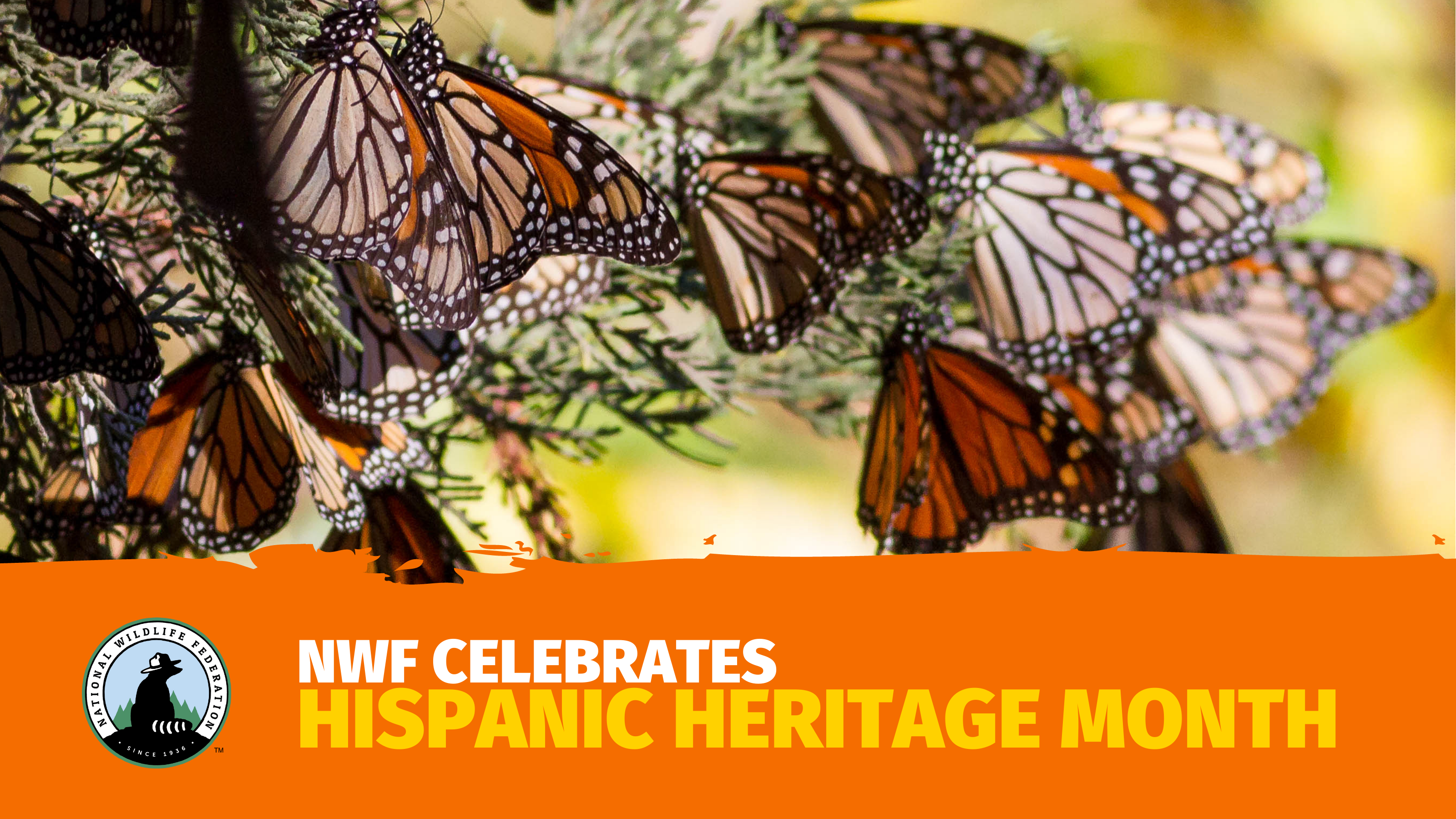We have much more to do and your continued support is needed now more than ever.
National Wildlife Federation and HECHO Celebrate Hispanic Heritage Month
Members of the Latinx, Hispanic, and Multicultural Employee Resource Group share what Hispanic Heritage Month means for them and explore the complexities of their identities throughout the month

Today marks the beginning of Hispanic Heritage Month, a holiday established to reflect on the contributions and culture of Hispanic and Latinx people in the United States. Hispanic Heritage Month is a complex month for many as we grapple with the implications of colonization and our identities.
During this timeframe, September 15 to October 15, the Latinx, Hispanic, and Multicultural Employee Resource Group at National Wildlife Federation will be sharing stories from and uplifting our members. We will also be amplifying the contributions that Hispanic, Latinx, Indigenous, Black environmentalists, and conservationists are risking their lives to accomplish. We hope that you’ll follow along with us as we explore these narratives!
Defining Language and Terms
Language that you may have seen before, like race, ethnicity, Hispanic, and Latinx can be used in ways that oversimplify our identities or even exclude identities. It’s important to understand what they mean to understand the challenges that many experience when trying to define their identity. Below are the terms we’ll be using in this blog and throughout the month:
- Race: Can be used to define someone by physical attributes, like skin color. According to the U.S. Census: “a person’s self-identification with one or more social groups.”
- Ethnicity: How one identifies themselves by learned aspects such as nationality, language, and culture. According to Merriam-Webster, it’s an: Ethnic quality or affiliation; a particular ethnic affiliation or group.
- Hispanic: Spanish-speaking people from Spanish-speaking countries.
- Latino: People from Latin America including Central America, South America, and the Caribbean
- Latinx: A gender-inclusive way to describe people from Latin America including Central America, South America, and the Caribbean.
- Colonization: The action or process of settling among and establishing control over the Indigenous people of an area, the action of appropriating a place or domain for one’s own use.
- Colonizer: A person who settles among and establishes political control over the Indigenous people of an area
- Settler Colonialism: A type of colonialism in which the Indigenous peoples of a colonized region are displaced by settlers who permanently form a society there.
Understanding “Hispanic” and “Latinx”
Oxford Dictionary defines Hispanic as “relating to Spain or to Spanish-speaking countries, especially those of Latin America”, and defines Latino as “(in North America) a person of Latin American origin or descent, especially a man or boy” (because the word Latino is gendered as masculine in Spanish). A Hispanic country primarily refers to the fact that the Spanish language is spoken in a country, while Latinx refers to the geographical location of a country in a gender-inclusive way.
The largest distinction between who counts as Hispanic and who counts as Latino is that “Hispanic” includes former colonies of Spain where Spanish is spoken (such as the Philippines), and it also includes Spanish people from Spain as “Hispanic”. Countries such as Brazil that are on the Latin American continent or that are in the Caribbean (such as Haiti) that don’t speak Spanish, are not Hispanic, but they are Latinx. Latinx countries include every country in Central and South America as well as in the Caribbean.

Additionally, when someone is “Latinx”, this is an ethnicity, not a race. It’s a category to group people from Latin America, and using it as a racial category erases Black, Indigenous, as well as Asian/Pacific Islander (particularly MENA – Middle Eastern and North African identities) that exist within Latin America. Latinos can also be completely racially white in some instances, so using Latino as a racial category to refer to white Latinos also naturalizes colonial settlers/their descendants as no longer being white, which is problematic.
The problem with oversimplifying these identities and using “Hispanic” and “Latinx” interchangeably is that it conflates colonizer identities and colonized identities. The term “Hispanic” includes Spanish people. Calling the people of Latin America “Hispanic”, when the majority of Latin America is not European or exclusively racially white, erases Blackness, Indigeneity, and other POC identities, while simultaneously naturalizing the presence of the descendants of Spaniards in Latin America today as something other than European.
This issue is reflected in the U.S. census that hasn’t changed the questions used to ask about ethnicity and race, which skews the data it presents — resulting in inequitable access to resources and produces a misrepresented picture of our community. Additionally, for Latinx people who are of mixed race, the options included in the census can be extremely limited.
This is epitomized for communities in Puerto Rico, where, as a largely mixed-race society, the categories in the census are not inclusive of the different racial groups that exist. This results in data that does not accurately portray the Puerto Rican population, and in 2010 instead disproportionately reported 76 percent of Puerto Ricans as White alone.
Factoring in Colonization
Because “Hispanic” relates to Spain or to Spanish-speaking countries, this term carries a tremendous amount of weight for Indigenous peoples who were targeted for genocide by colonizers seeking to control Indigenous land. “Latinx” can carry this weight as well, as “Latin”-based languages are European. Indigenous communities have faced centuries of violent, forced linguistic and cultural assimilation to such Latin-based languages as Spanish, French, and Portuguese. Colonization is an ongoing process, and Indigenous communities continue to face colonial violence today.
Hispanic Heritage Month begins on September 15, which also kicks off independence day celebrations across Latin America. September 15 is the independence day of 5 countries: Costa Rica, El Salvador, Guatemala, Honduras, and Nicaragua. September 16 is Mexico’s independence day, and Chile’s is on September 18th. Hispanic Heritage Month falls on independence days intentionally as a means of bringing together Latin Americans around national celebrations; however simultaneously, independence days carry negative implications for Indigenous peoples. Independence days mark the drawing of colonial borders on Indigenous land and the creation of the settler states that make up Latin America today. For many Indigenous peoples, this is a time of mourning.
It’s Complicated
Some feel that this time of national recognition does little to address the issues our community faces, while others look forward to celebrating Hispanic Heritage Month every year. The truth is that for many, Hispanic Heritage Month isn’t straightforward. As we interrogate the complexities that Hispanic Heritage Month raises, we hope that you’ll stick with us as we seek to emphasize and uplift Indigenous and African history that must play a central role in the discussions that take place.
This blog was written in collaboration by members of the Latinx, Hispanic, and Multicultural ERG at National Wildlife Federation. Special thanks goes to our lead authors, Amy Dominguez and Gabi Rivera.























